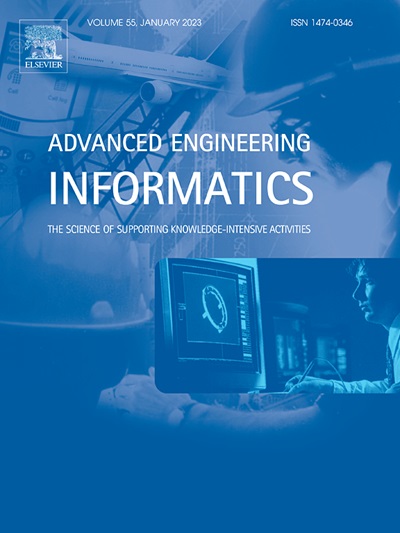AIoT-powered building digital twin for smart firefighting and super real-time fire forecast
IF 8
1区 工程技术
Q1 COMPUTER SCIENCE, ARTIFICIAL INTELLIGENCE
引用次数: 0
Abstract
Complex dynamics inherent of building fire poses big challenges to firefighting and rescue, especially with limited access to critical fire-hazard information. This work proposes the novel AIoT-integrated Digital Twin for the full-scale multi-floor building to manage the dynamics fire information. This system allows for super real-time mapping of actual building fires into accurate and concise digital fire scene at the cloud platform. By developing the ADLSTM-Fire model, we effectively transform discrete sensor-array data into high-dimensional spatiotemporal temperature fields in real-time, and furthermore, forecast future fire development and hazardous regions 60 s in advance. By comparing with benchmark numerical simulations, the Digital Twin system demonstrates the high reliability of super real-time fire-scene reconstruction and the capacity of fire-risk forecasting in supporting firefighting. The full-scale building fire experiment is employed to validate the generalisation capability of the proposed smart firefighting method. This work demonstrates the great potential and robustness of AIoT and digital twin in support smart firefighting and reducing fire casualties by information fusion.
求助全文
约1分钟内获得全文
求助全文
来源期刊

Advanced Engineering Informatics
工程技术-工程:综合
CiteScore
12.40
自引率
18.20%
发文量
292
审稿时长
45 days
期刊介绍:
Advanced Engineering Informatics is an international Journal that solicits research papers with an emphasis on 'knowledge' and 'engineering applications'. The Journal seeks original papers that report progress in applying methods of engineering informatics. These papers should have engineering relevance and help provide a scientific base for more reliable, spontaneous, and creative engineering decision-making. Additionally, papers should demonstrate the science of supporting knowledge-intensive engineering tasks and validate the generality, power, and scalability of new methods through rigorous evaluation, preferably both qualitatively and quantitatively. Abstracting and indexing for Advanced Engineering Informatics include Science Citation Index Expanded, Scopus and INSPEC.
 求助内容:
求助内容: 应助结果提醒方式:
应助结果提醒方式:


